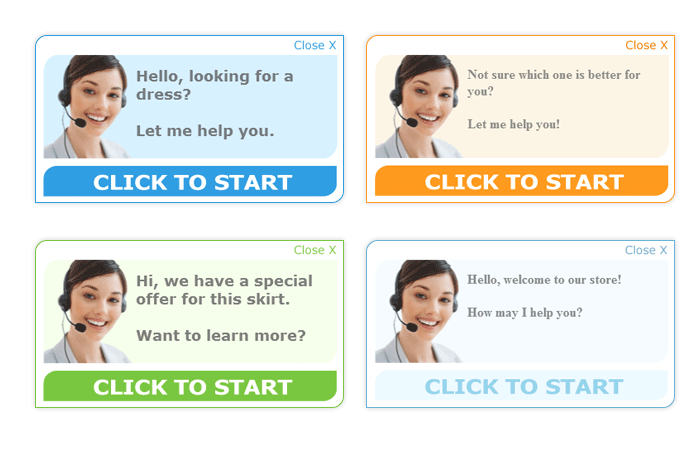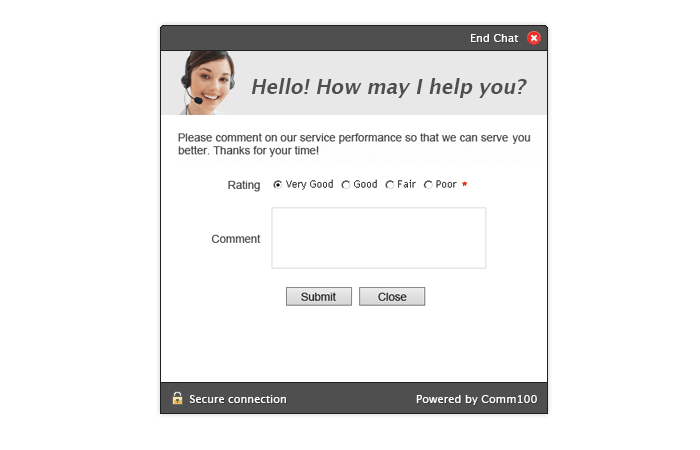This is the fourth article in a five-part series on structuring your website for conversion.
Part 1: The Art and Science of Product Grouping
Part 2: 5 Key Guidelines for Upselling and Cross-Selling
Part 3: Keep Visitors Focused on Your Website
Part 4: Add a Human Touch to Your Website through Live Chat
Part 5: Understanding Customer Pain Points
Automated website conversion is a tricky process. You lure visitors to your website using the latest SEO practices, and once they land on your pages, you have to compel them to stay. While there are a lot of great things to say about sophisticated website software that automates the conversion process, the reality is that real human interaction often makes the difference between a bounce and a conversion.
In this article, we’ll look at the implementation of human interaction on your website through the use of live chat. Live chat works best when it is woven into the structure of your website in a way that keeps it invisible until it’s really needed. Think of live chat as a store clerk that offers to assist you at the precise moment that you have a question. Indeed, a good clerk won’t interrupt you when you’re just browsing, but by watching your body language, she will know exactly when to approach you and offer help. Live chat is your virtual store clerk.
Background
Wells Fargo was one of the early pioneers of live chat. They originally started the service over a decade ago (way back in 2002), and though the results were not initially encouraging, they stuck with it. By 2008, they were seeing a double-digit increase in their conversion rates due to live chat.
Clearly, live chat has caught on with consumers, and businesses are beginning to sit up and take notice. A recent Forrester Research paper proclaimed that 38% of respondents who purchased online indicated that live chat was directly related to their purchase decision. In other words, human interaction during their decision-making process directly resulted in the conversion. Furthermore, 62% of respondents said that they are more likely to purchase again from the merchant who offered live chat.
There should be little doubt that live chat can have a direct and powerful influence in your conversion rate.
Best Practices
While the above information may tempt you to rush out and install live chat on your website, understand that it’s not something you simply fire-up and forget. Live chat is a highly interactive feature that requires planning, resources and training. Your website structure must be capable of supporting live chat in a way that delights your visitors and, for the most part, remains invisible until it’s needed.
Below we’ve outlined a number of best practices that will help you implement live chat on your site.
-
- Allocate Resources
An understaffed live chat feature is worse than not having the feature at all. You don’t want your visitors to click your live chat button, only to have nobody available to answer the call. Ensure management has set aside a budget to support a staff of chat agents.
- Train Your Chat Agents
Your chat agents are on the front lines, so they should be trained to be courteous, proactive, positive and professional. Additionally, don’t overlook the importance of proper grammar. Remember that your agents represent your company, and they will be communicating through the written language. If they cannot express professionalism through proper mastery of the written language, they have no business communicating with your precious visitors. For example, if they use expressions like, “Me and Kim had coffee at lunch,” they are in severe need of training on the English language!
- Be Proactive, Not Intrusive
There’s a fine line between being helpful and being a pest. Carefully analyze your site’s traffic patterns to determine the precise moment to offer a proactive chat session. Many live chat services, such as fine-tuning in this area. For example, a customer who spends more than 1 minute on a particular page may have some questions, and he may appreciate a slide-in tab that offers live chat. Another thing to watch is the cart abandonment pattern. For example, from what page does a customer usually leave the site after having put products in the shopping cart? Perhaps there may be a structural problem with the page, and an offer to chat might help assuage that issue. Many merchants have a policy to initiate a live chat session with visitors as they complete their purchase, just to answer any last minute questions or to look for upsell and cross-sell opportunities.
- Ensure Every Page on Your Site. Features a Chat Button
Offer to speak to your visitors whenever they need help. The chat button should appear in a location that is consistent from one page to the next. Many sites choose the upper right-hand corner for this feature. Other sites implement a clever “slide-in” tab that visitors can access along the left or right margin.
- Respond Immediately
When a customer hits the chat button – indicating she needs help – how long does she wait until a chat agent answers her request? Focus on minimizing this number. Many companies have a policy of 10 seconds maximum. This could present a problem if you’re understaffed. Track your response time, and if it starts to exceed some minimal amount, raise the issue with management. You may need to hire more staff or outsource the overload to an outside firm.
- Establish Chat Service Hours
You may not need to staff your live chat service 24×7, so make sure your chat button indicates: A) the hours that your chat service keeps, and B) whether the service is currently active. If all your chat agents are currently busy, your chat button should indicate that the service is either unavailable or that there will be an extended wait period.
- Follow Up
After a chat service has concluded, offer to send a copy of the entire session to your visitor. Additionally, ask a percent of your visitors to fill out a quick survey form indicating their satisfaction level with the service and what might be done to improve it. Your website developer should automate this follow-up process.
- Do Not Spy
Although many live chat services provide the ability to see what pages the visitor has viewed prior to the conversation, do not tell them that you have this information. This information should only be used to provide context to the chat agent. Nobody likes to be spied upon!
- Do Not Guess
Chat agents should be honest, and if they do not know the answer, they are obligated to find the answer. If the process of acquiring the answer will take a lot of time, your chat agent should offer to email the answer to the visitor.
- Review
Management should perform periodic quality audits to ensure excellent service to all visitors. Survey results and direct customer feedback should be analyzed for potential issues with the live chat service.
For more practices, you can read our blog post: Best Practices for Adding Live Chat to Your Website.
Summary
Live chat allows you to implement the human element directly into your online customer interaction, dramatically increasing conversions. However, there are many structural and procedural issues to consider as you implement this feature. The set of best practices in this article will help you implement live chat on your site.
In the fifth and final article in this series, we’ll suggest ways you can structure your website to address customer pain points. This is an important sales tool in live sales environments, but you can incorporate the same concepts online as well.
Download now: How to Create a Dynamic Live Chat Strategy
You’ve defined your live chat objectives. Next you need to find a way to implement your live chat objective effectively. This eBook provides you with several perspectives in developing the strategy and making full use of your live chat solution.
Download Now
eBook









